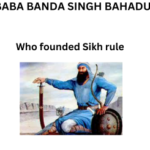Jharkhand records country’s highest percentage of child marriage among girls: Basics Explained

Jharkhand has recorded the highest percentage, as high as 5.8, of underage girls getting married, according to the latest demographic sample survey the Registrar General and Census Commissioner.
The percentage of females who got effectively married before reaching 18 years of age is 1.9 at the national level and varies from 0.0 in Kerala to 5.8 in Jharkhand the survey said.
Jharkhand and West Bengal are the only two States in the country where more than half of the women are married before attaining the age of 21 years.
The percentage of women marrying before reaching the legal minimum age of 18 is lowest in Lakshadweep (4 per cent); Jammu and Kashmir, and Ladakh (6 per cent each); Himachal Pradesh, Goa, and Nagaland (7 per cent each), and Kerala and Puducherry (8 per cent each).
But the report also said that early marriage has been declining over time.
LEARNING FROM HOME/ WITHOUT CLASSES/ BASICS
Child marriage, according to Indian law, is a marriage in which either the woman is below the age of 18 or the man is below the age of 21.
The government is considering raising the minimum legal age of marriage for women from 18 to 21, to reduce the prevalence of child brides (below 18) in India.
- Girls and Boys getting married before their respective legal ages remain large with 12.1 million child marriages reported by Census 2011.
- It was pointed out that as per the National Family Health Survey-V (NFHS 2019-21), nationally, 23.3% women between the age group of 20-24 were married-off before attaining the age of 18 and that as per NCRB-2021 report, at least 34 minor girls were kidnapped every day in 2021 to be compelled into marriage.
- About 25 per cent of women aged 18-29 and 15 per cent of men aged 21-29 got married before reaching the minimum legal age of marriage, according to the latest National Family Health Survey (NFHS) conducted between 2019-21.
- The NFHS-5 said about two-fifths of women married before reaching the legal age in West Bengal (42 per cent), Bihar (40 per cent), and Tripura (39 per cent), and about one-third of them tied the knot before reaching the legal age of marriage in Jharkhand (35 per cent) and Andhra Pradesh (33 per cent).
- The median age at first marriage for women aged 20-49 slightly increased from 19 years in 2015-16 to 19.2 years in 2019-21. For men aged 25-49, the median age at first marriage slightly increased between 2015-16 and 2019-21 (from 24.5 to 24.9 years), the NFHS said.
While child marriage has long term negative consequences for both boys and girls in terms of educational outcomes as well as transitions to the labour market and family formation – the adverse effect of child marriage on girls is grave. This includes early pregnancy, maternal and neonatal mortality, educational setbacks, lower employment prospects, exposure to violence and abuse – leading to negative physical and psychological outcomes. Besides the risk of early childbearing many child brides have little agency within their marital households.
The benefits of later marriage for women are well established. It is associated with higher nutrition levels for women and their children, lower maternal mortality, improved educational outcomes and greater financial independence.
LEGISLATION
The Child Marriage Restraint Act, 1929, Sharda Act, was enacted by the British in order to eradicate the culture of child marriage in India. The age limit set by the legislation was 14 years for girls and 18 years for boys. the legislation was amended in 1978 post-independence, in order to increase the age limit. The age limit was increased to 18 years for girls and 21 years for boys.
However, the Act was repealed and replaced by the Prohibition of Child Marriage Act, 2006.
The Prohibition of Child Marriage Act, 2006, which is the national law against child marriage, does not allow the question of consent in case of minors and treats child marriage as a punishable offence
Marriage of a minor solemnized by use of force, fraud, deception, enticement, selling and buying or trafficking a void marriage, while all other child marriages are voidable at the option of the parties to the marriage and hence valid marriages until they are nullified by the court.
The Act of 2006 criminalises the support of child marriages in India and provides for rigorous imprisonment for a term which may extend to two years, along with a fine in several cases, which may extend to rupees one lakh.
- Offence under this Act is cognizable and non bailable.
- The act provided that no woman shall be punishable with imprisonment.
- The child who was a party to the marriage can get the child marriage annulled within the period of 2 years, the limitation period ,from the date of completion of 18 years. Only the children affected by child marriage can file a petition for voidability or annulment of marriage. Under certain circumstances, child marriage can be declared null and void by the Courts.





0 Comments